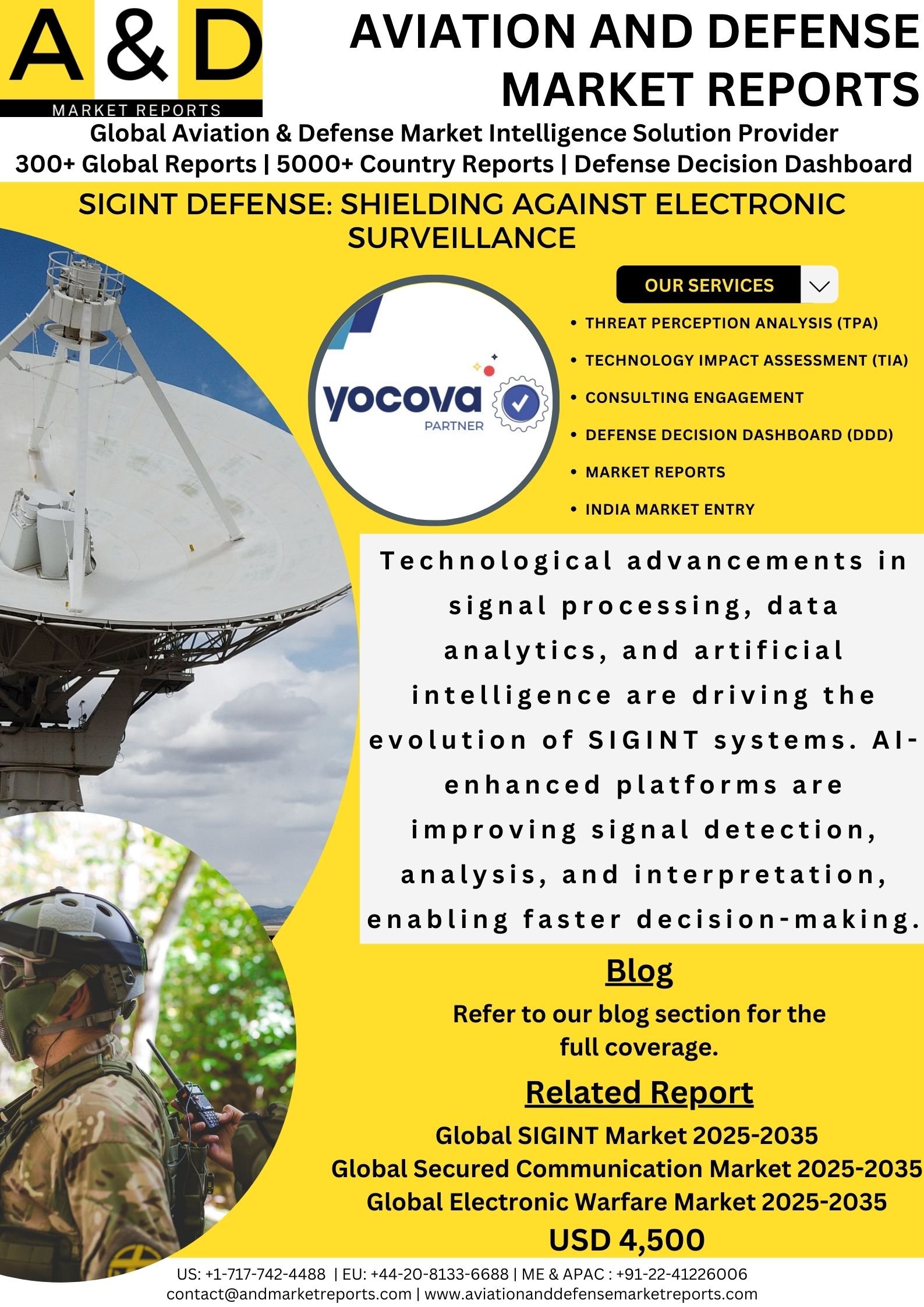The global Signals Intelligence (SIGINT) market is experiencing substantial growth, driven by increasing security concerns, advancements in technology, and the rising demand for intelligence gathering in military, defense, and cybersecurity sectors. SIGINT involves the interception and analysis of various signals, including communications (COMINT), electronic signals (ELINT), and foreign instrumentation signals (FISINT), to gather critical intelligence.
Concept of SIGINT Market:
The Signals Intelligence (SIGINT) market involves the collection, analysis, and exploitation of signals from various sources, including communications (COMINT), electronic signals (ELINT), and foreign instrumentation signals (FISINT), to gain valuable intelligence for military, defense, and security purposes. SIGINT systems are used to intercept and decode transmissions, monitor electronic communications, detect and counter threats, and gather strategic data in real-time.
Driving forces behind SIGINT Market:
The Signals Intelligence (SIGINT) market is experiencing significant growth, driven by several key factors reshaping defense, security, and cybersecurity landscapes. These include technological advancements, rising security concerns, and changing geopolitical dynamics.
- Geopolitical Instability: As global instability escalates, nations are prioritizing intelligence gathering to protect national security. SIGINT systems allow countries to monitor military activities, identify potential threats, and collect actionable intelligence in real-time. Heightened concerns about terrorism, cyber warfare, and regional conflicts have led governments worldwide to invest in SIGINT technologies to address both conventional and emerging security challenges.
- Technological Advancements: Ongoing advancements in signal processing, data analytics, and artificial intelligence are driving the evolution of SIGINT systems. AI-enhanced platforms are improving signal detection, analysis, and interpretation, enabling faster decision-making. Breakthroughs in software and hardware, including more advanced radar and signal decoding technologies, are expanding the operational range and effectiveness of SIGINT solutions.
- Cybersecurity Challenges: The growing frequency and complexity of cyberattacks are fueling demand for SIGINT in the cybersecurity sector. Governments and private entities are leveraging SIGINT to detect cyber threats, prevent data breaches, and protect critical infrastructure. SIGINT plays a vital role in tracking digital communications, identifying cybercriminal activities, and intercepting signals used in cyberattacks.
- Military and Defense Needs: SIGINT is crucial for modern warfare, supporting operations such as surveillance, reconnaissance, electronic warfare, and counterintelligence. Armed forces are increasingly investing in SIGINT technologies to improve situational awareness, disrupt enemy communications, and maintain an advantage in both conventional and unconventional warfare.
- Space-based SIGINT Platforms: The integration of space-based platforms, like satellites, into SIGINT operations is expanding market opportunities. These systems provide wide-area coverage, enabling real-time intelligence gathering across vast regions, further solidifying SIGINT’s role in global security efforts.
Future developments in the SIGINT Market:
Future developments in the Signals Intelligence (SIGINT) market are poised to enhance the effectiveness and reach of intelligence-gathering systems across military, defense, cybersecurity, and security sectors.
- Advanced Cybersecurity Applications: As cyber threats grow more sophisticated, SIGINT systems will play an increasingly central role in cybersecurity. Future SIGINT technologies will be better equipped to monitor and defend against cyberattacks, providing real-time identification of cyber intrusions, data breaches, and other malicious activities. This will enable more proactive and preventive cybersecurity measures.
- Space-Based SIGINT Solutions: Space-based platforms, such as satellites and spaceborne sensors, will expand their role in SIGINT operations. With a broader view of the Earth’s surface and the ability to monitor global communications, space-based SIGINT will allow for more extensive, real-time intelligence gathering over larger geographic areas. This will improve the monitoring of remote and inaccessible regions, enhancing situational awareness.
- Smaller, More Agile Platforms: Future SIGINT systems will be more compact, mobile, and adaptable, driven by advancements in miniaturization and lightweight materials. These smaller platforms can be deployed in a variety of environments—ranging from military operations to surveillance missions in urban or harsh terrain—providing more flexible and cost-effective solutions.
- Integration with Other Intelligence Disciplines: SIGINT will increasingly be integrated with other intelligence-gathering methods, such as Human Intelligence (HUMINT) and Imagery Intelligence (IMINT). By combining data from multiple sources, SIGINT platforms will provide a more holistic understanding of threats and opportunities, improving the overall effectiveness of intelligence operations.
- 5G and Next-Generation Communication Monitoring: As the global rollout of 5G networks continues, SIGINT technologies will need to adapt to the new communication infrastructure. Future SIGINT systems will be designed to intercept and analyze 5G signals, providing intelligence agencies with the ability to monitor next-generation communications for security threats.
Conclusion
The need for advanced SIGINT systems is expected to grow significantly. By integrating SIGINT with other intelligence domains, its contribution to comprehensive security solutions will be further reinforced. Ultimately, SIGINT will continue to be a vital element in safeguarding national security, countering cyber threats, and supporting military operations, cementing its role as an essential tool in contemporary defense strategies.
